Keynote Speaker
MNC 2023 Keynote Speakers List |
|
Symposium A: Challenge to the physical limit for lithography and devices: Are we ready to boost the scaling roadmap? |
|
Dr. Kokoro Kato, Nihon Synopsys G.K., Japan 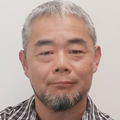 PAPER TITLE New Trends of Curvilinear Data Flow in Leading-Edge Semiconductor Manufacturing Short Biography Dr. Kato received PhD from Tokyo University regarding his study on Mask Rule Check (MRC). He has been engaged in EDA development for thirty years. In 1992 he started his career on development of layout editor SX9000 in Seiko, then he and his team moved to the field of mask related software. He achieved commercial success of SmartMRC which is a powerful MRC tool, and his team was acquired by Synopsys in 2015. He was a chairperson of Photomask Japan (PMJ) technical committee from 2011 to 2014, and currently he is a chairperson of PMJ steering committee. |
|
1-1: Advanced Lithography and Patterning |
|
Prof. Takeo Watanabe, Univ. of Hyogo, Japan 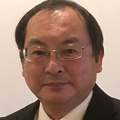 PAPER TITLE EUVL R&D at NewSUBARU Synchrotron Light Facility Short Biography Takeo Watanabe is now Full Professor, Director of Center for EUVL (CEL) at Laboratory of Advanced Science and Technology for Industry (LASTI), and Special Assistant to the President, University of Hyogo. He is expert of the EUV lithographic technologies for electronic devices and works in the EUVL field more than 30 years. He started his work for R&D of 64MBit DRAM technologies at the Central research lab. of Sharp Corporation in Japan, 1990. After that he joined the Himeji Institute of Technology (present University of Hyogo, Japan) in 1996. LASTI operates the NewSUBARU synchrotron light facility which is the largest synchrotron facility operated by university in Japan. EUVL related research is carried out at NewSUBARU, and many contributions related to the technology of resist, mask, optics etc. have being done on EUV lithography at NewSUBARU. He has authored over 250 technical papers and received many awards. He is the President of the International Conference of Photopolymer Science and Technology (ICPST). He is also Chair of organizing committee of the International Conference of Photomask Japan. He is committee member of IEEE International Roadmap of Devices and Systems. |
|
1-2: Electron and Ion Beam Technologies |
|
Prof. Keiki Fukumoto, KEK, Japan 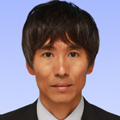 PAPER TITLE Imaging carrier dynamics in semiconductors using femtosecond photoemissoin electron microscopy Short Biography He received his Ph.D. in physics from Berlin Free University, Germany, in 2005 by studied on spin dynamics in ferromagnetic materials. He continued his research on spin dynamics at JASRI/SPring-8 from 2006 to 2007. He worked for Toyota R & D research center from 2008 to 2009. And then he joined Prof. Koshihara's group in Tokyo Institute of Technology as a postdoctoral researcher and constructed femtosecond photoemission electron microsocpy system to study carrier dynamics in semiconductors. He moved to High Energy Accelarator Resarch Organization (KEK) and promoted to an assistant professor on 2017, and to an assosiate professor on 2019. |
|
1-3: Patterning Materials |
|
Mr. Toru Fujimori, FUJIFILM, Japan 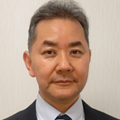 PAPER TITLE EUV resist materials developmet; past, present and future Short Biography TORU FUJIMORI, is a Senior Expert. He joined FUJIFILM Corporation in 1991, after received B.S. and M.S. degrees in organic chemistry from Saitama University. He has developed novel materials for photographic films, and photoresists. In 2002, He’s moved to electronic materials research laboratories to study color resist for image sensor. Since 2008, he has studied photo resist materials for KrF, ArF, ArF immersion, EB and EUV lithography as a research manager. From 2014 to 2016, he was senior researcher at EIDEC (EUVL Infrastructure Development Center). He has filed over 200 patents, described lots of papers, presentations and text books. |
|
2-1: Nanocarbons |
|
Prof. Kosuke Nagashio, Univ. of Tokyo, Japan 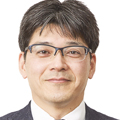 PAPER TITLE 2D layered semiconductors: Challenge & Perspective Short Biography Kosuke Nagashio received the Ph.D. degree in Materials Engineering from The University of Tokyo in 2002, respectively. From 2002 to 2003, he was a postdoctoral research fellow at Stanford University, California. He is currently a Professor with the Department of Materials Engineering, The University of Tokyo. His research interests presently focus on the carrier transport in 2D materials and the crystal growth of 2D materials. |
|
2-2: Nanodevices |
|
Prof. Tim Kwang-Ting Cheng, Hong Kong Univ. of Sci. and Technol., Hong Kong 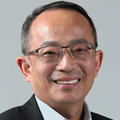 PAPER TITLE Design and Integration of Next-Generation Edge AI Chips: Challenges and Opportunities Short Biography Tim Cheng is currently Vice-President for Research and Development at Hong Kong University of Science and Technology (HKUST) and Chair Professor jointly in the Departments of ECE and CSE. His current research interests include AI chip design, EDA, computer vision, and medical image analysis. In 2020, he received ~HK$450M funding to lead the founding of the AI Chip Center for Emerging Smart Systems (ACCESS) which is a multidisciplinary center aims to advance IC design and EDA to help realize ubiquitous AI applications in society. He received his PhD from University of California, Berkeley. Prior to joining HKUST, he was a Professor at the University of California, Santa Barbara, and spent five years at AT&T Bell Laboratories. At UCSB, Cheng served as Founding Director of the Computer Engineering Program (1999-2002), Chair of ECE Department (2005-2008), and Associate Vice-Chancellor for Research (2013-2016). At HKUST, Cheng served as Dean of Engineering (2016-March 2022) prior to taking the VPRD role. Cheng, an IEEE fellow and a fellow of Hong Kong Academy of Engineering Sciences a, received 12 Best Paper Awards from various IEEE and ACM conferences and journals. He has also received UCSB College of Engineering Outstanding Teaching Faculty Award, Pan Wen Yuan Outstanding Research Award, 2020, and Fellow of School of Engineering, The University of Tokyo. He served as Editor-in-Chief of IEEE Design and Test of Computers and was a board member of IEEE Council of Electronic Design Automation’s Board of Governors and IEEE Computer Society’s Publication Board. |
|
2-4: Inorganic Nanomaterials |
|
Prof. Satoru Nakatsuji, Univ. of Tokyo, Japan  PAPER TITLE Designing Topological Magnetic Materials for Innovative Quantum Electronics Short Biography Satoru Nakatsuji received his Ph.D in Physics from the Kyoto University in Japan in 2001 and then worked as a postdoc at National High Magnetic Field Laboratory in Florida till 2003. After he served as a lecturer of the Department of Physics at Kyoto University from 2003 to 2006, he moved to University of Tokyo as an associate professor of the Institute for Solid State Physics and later became a full professor in 2016. Recently in 2019, he joined the faculty of Department of Physics of University of Tokyo as a full professor. He is currently serving as Professor at Department of Physics, Project Professor at ISSP, the Director of Trans-Scale Quantum Science Institute, UTokyo. He also serves as Research Professor in the Department of Physics and Astronomy at Johns Hopkins University, Project Manager for Mirai-Project Large Scale, JST, Japan and a Fellow in CIFAR, Canada. Satoru has a broad range of interest in quantum materials covering strange metals, topological materials, spintronics and thermoelectric applications. He has received various prestigious awards such as Japan Academy Medal (Japan Academy) in 2015, Japan Society for the Promotion of Science Award (JSPS) in 20015, The Young Scientists’ Award (MEXT) in 2012 etc. |
|
3: Nanoimprint, Hybrid-NIL, Biomimetics, and Functional Surface |
|
Prof. Yoshihiko Hirai, Osaka Metropolitan Univ., Japan 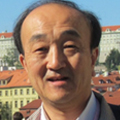 PAPER TITLE Approach for process and material design utilizing deep learning Short Biography He received BS, MS, and PhD degrees of Electronics Engineering from Osaka Prefecture University at 1979, 1981, and 1995, respectively. He jointed Matsushita Electric Co. (Panasonic) at Central research Laboratory on 1981. He developed semiconductor T-CAD technology and fine lithography process from 1984 to 1990. From 1990 to 1996, he researched on Si quantum devices. He was promoted as an associate professor of mechanical system engineering at Osaka Prefecture University on 1996 and started research on nanoimprint technology from 1998. He became professor of physics and electronics engineering on 2004. He was a chair of Nanoimprint technology workshop of Japan society of applied physics. Also he is a member of international steering committee of nanoimprint and nano print conference and international conference of micro and nano engineering conference (sister conference of MNC). He retired Osaka Prefecture University at 2022 and he was given emeritus Professor. He is now research fellow of Osaka Metropolitan University. |
|
4: BioMEMS, Lab on a Chip, and Nanobiotechnology |
|
Prof. Eiichi Tamiya, Osaka Univ., Japan 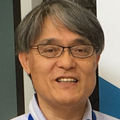 PAPER TITLE Microfluidic devices for biomedical applications Short Biography Director, Advanced Photonics and Biosensing Open Innovation Laboratory, National Insitiute of Advanced Industrial Science and Technology(AIST) Research Professor, SANKEN, Osaka University After working as an assistant professor and lecturer at Tokyo Institute of Technology, I became an associate professor at the Research Center for Advanced Science and Technology, the University of Tokyo in 1988, and a professor at the Japan Advanced Institute of Science and Technology in 1993 before professor of Osaka University, Department of Applied Physics in 2007. Since 2020 I have been Research Professor at SANKEN, Osaka University. I have been served as Laboratory Director of the Open Innovation Laboratory under AIST from 2017. Research projects : 1. Biochips and biosensors 2. Nanotechnology based bioengineering and biosensors 3. MEMS based biodevices 4. POC (point-of-care) biosensors for medical diagnosis, food safety and environmental protection 5. Cell based chips for tissue and stem cell engineering 6. Biomass energy conversion systems, biobattery Honors and awards : 1. Progressive Award for young researchers (The Chemical Society of Japan, 1989) 2. Industrial Collaboration Promotion Award (Ishikawa Prefecture,2000) 3. New technology and production Award (Small and Medium Enterprise Agency, 2001) 4. Ichimura Academic Award (The New Technology Development Foundation, 2005) 5. Invention Encouragement Award of Minister of Education, Culture, Sports and Science (2010) 6. Osaka University Presidential Awards for Achievement (2014) 7. Nakatani Award (Gland Prix), Nakatani Foundation (2016) 8. Fellow Award, Japan Society of Applied Physics(2020) 9. JSAC Award, Japan Society of Analytical Chemistry (2021) Publication : Original paper > 400 Book : 115 Review articles : 135 Patents (granted) : 112 |
|
5: Microsystem Technology and MEMS |
|
Prof. Daichi Chiba, Osaka Univ., Japan 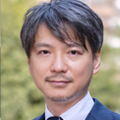 PAPER TITLE Mechanical motion detection by spintronics Short Biography He earned his Ph.D. in Engineering from Tohoku University in 2004. Following his doctoral studies, he joined the Japan Science and Technology Agency's Semiconductor Spintronics Project as a Researcher. In 2008, he became an Assistant Professor at Kyoto University and later advanced to Associate Professor in 2012. Additionally, he held academic positions at Osaka University, where he was recognized as an Honorary Professor. In April 2023, he took on the role of Director and Professor at Tohoku University's International Center for Synchrotron Radiation Innovation Smart. His expertise lies in Spintronics. |
|
6: Atomic Layer Processing (ALP) |
|
Prof. Kentaro Kaneko, Ritsumeikan Univ., Japan 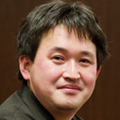 PAPER TITLE Emerging UWBG material: GeO2 Short Biography Kentaro Kaneko obtained Ph.D degrees in Engineering from Kyoto University in 2013. He was engaged in research of gallium oxide (Ga2O3) in his early carrier. He founded a venture company when he was a Ph.D candidate student, whose name is FLOSFIA Inc. FLOSFIA sells Ga2O3 Schottky barrier diode power device from 2020. He worked in Kyoto university as an assistant professor and lecturer until June, 2022 and he has been a full-professor in Ritsumeikan University from July, 2022. He has been conducting research of germanium dioxide (GeO2) since 2021. In 2022, he founded his 2nd venture company of PATENTIX Co. for developing of GeO2 power device. |
|
| Key Note Lectures are only available on-demand from Nov. 14 with longer lecture time on important topics. | |
